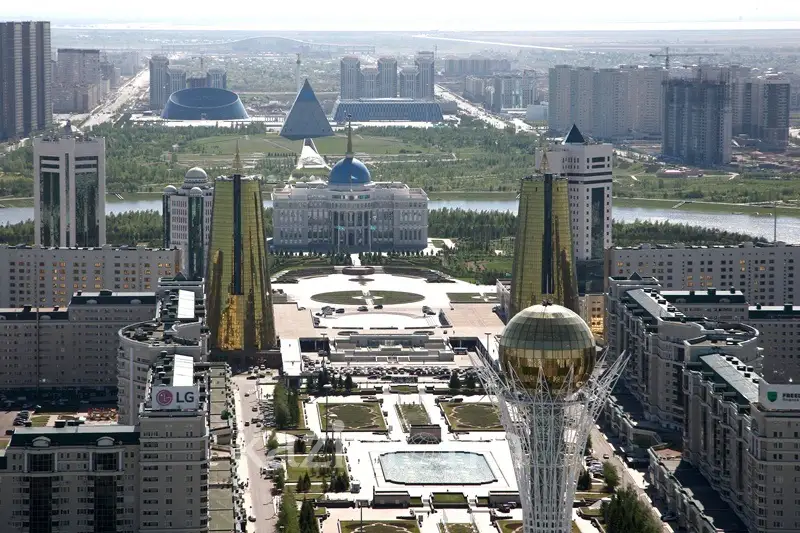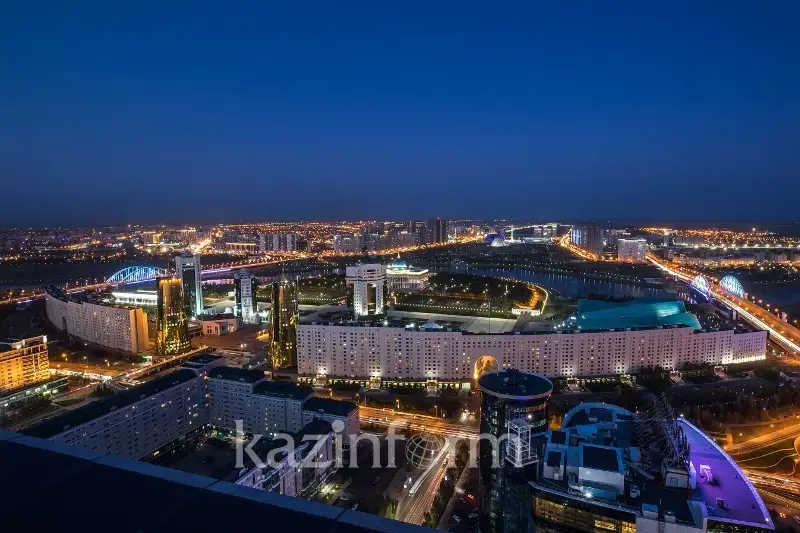Urban legends about House of Ministries

1. Initially, the building of the House of Ministries was intended to be an administrative and residential complex. This is true. The information was confirmed by the Astana Mayor's Office and Shokan Mataibekov, who was the then chief architect of the capital.
 As Mataibekov said, the complex was to include residential estate. The overall dimensions, shape, number, and height of the complex were specified in the general plan. The building planning was carried out by Nurmakhan Tokayev, a famous city planner. This huge construction project was set to be in the same architectural site alongside with the buildings of the Government, Parliament, Akorda Presidential Palace, and other buildings around the area. Later, considering location, it was decided to transform it into an administrative building complex.
As Mataibekov said, the complex was to include residential estate. The overall dimensions, shape, number, and height of the complex were specified in the general plan. The building planning was carried out by Nurmakhan Tokayev, a famous city planner. This huge construction project was set to be in the same architectural site alongside with the buildings of the Government, Parliament, Akorda Presidential Palace, and other buildings around the area. Later, considering location, it was decided to transform it into an administrative building complex.
According to the Astana Mayor's Office, the construction of the buildings began in 2004. It was designed by KUAT Corporation. The special requirement imposed on the face of the buildings was to use only light colors for instilling optimism and a good mood.
"Yes, indeed, according to the general layout plan, it was intended to be an administrative and residential complex. And we designed two wings as 18 to 7-storeyed residential buildings in front of the Baiterek Tower. By that time when it was decided to remake the design, we had partially constructed about 3 to 5 floors. We faced difficulties, something was demolished, something was added. However, we found a way out with minimum expenses. At that time, everything was fast-paced. Therefore, to anticipate, guess or calculate everything was impossible. I think, after all, the decision to remake it was the right one," the architect said.
 In addition to workrooms and offices, there are archives, a museum, and an out-patient hospital in the House of Ministries.
In addition to workrooms and offices, there are archives, a museum, and an out-patient hospital in the House of Ministries.
"There are no dedicated spaces or interesting spectacular places in this complex. It is an ordinary administrative building, although a governmental one. And the most important here was to ensure its functionality. As all the major ministries were to be located in the same complex, ensuring a convenient connection both vertically and horizontally was critical," Mataibekov added.
2. The building complex was constructed in the shape of a soaring eagle or belt. The architects did not have ideas to construct the building in this shape.
 "While designing, we noticed that from a bird's eye perspective it looks like a figure of a soaring eagle. And because it was very symbolic, they supported it in the design," Shokan Mataibekov clarified.
"While designing, we noticed that from a bird's eye perspective it looks like a figure of a soaring eagle. And because it was very symbolic, they supported it in the design," Shokan Mataibekov clarified.
3. The building was to become the longest in Astana. In fact, as the architect revealed, the design makers did not pursue that goal. It turned out to be such a long building just because of the spatial planning required.
 According to the information from the Astana Mayor's Office, the building complex is about 1.5 kilometers long. It consists of 20 blocks varying from 8 to 10 floors. The total area of the site is 228,000 sqm. The external walls covered by porcelain tiles were made of monolithic reinforced concrete.
According to the information from the Astana Mayor's Office, the building complex is about 1.5 kilometers long. It consists of 20 blocks varying from 8 to 10 floors. The total area of the site is 228,000 sqm. The external walls covered by porcelain tiles were made of monolithic reinforced concrete.